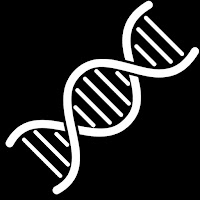Coronavirus disease (COVID-19) is an infectious disease caused by a newly discovered coronavirus. Most people infected with the COVID-19 virus will experience mild to moderate respiratory illness and recover without requiring special treatment. Older people, and those with underlying medical problems like cardiovascular disease, diabetes, chronic respiratory disease, and cancer are more likely to develop serious illness. It starts spreading in our world from November 2002.
In November 2002,
SARS began spreading from the Guangdong province of Southern China, but its reservoir was unknown. In the past, Nipah and Hendra, both zoonotic viruses, originated from bats, and this motivated researchers to find whether bats are the natural reservoirs of SARS-CoV.
In 2005,
Two research groups independently reported that bats (horseshoe bats in particular) are the natural host of genetically diverse coronaviruses and closely related to those responsible for the SARS outbreak. These viruses were termed SARS-like coronaviruses, and they displayed considerable genetic similarities to SARS-CoV isolated from humans or civets. This suggested that the virus responsible for SARS outbreak was a member of the SARS-like coronaviruses group.
In 2012,
It emerged in saudi Arabia as MERS-CoV, when humans were infected through direct or indirect contacts with infected dromedary camels. However, genome analysis suggested that MERS-CoV might have also originated in bats and was transmitted to camels in the distant past.
In December 2019,
Patients with severe pneumonia cases of unknown cause were reported in Wuhan, China, and a novel coronavirus strain was detected from the lower respiratory tract of 4 patients. Viruses were isolated from these clinical samples, and their genomes were analyzed by deep sequencing. Phylogenetic analysis of 2019-novel coronavirus (2019-nCoV) genomes and other coronaviruses were used to establish the evolutionary history and infection sources.
Interestingly, this indicated that 2019-nCoV (GenBank: MN908947.3) shares about 96% nucleotide sequence identity to bat coronavirus RaTG13 (GenBank: MN996532.1), with 79.5% and 55% identity to SARS-CoV BJ01 (GenBank: AY278488.2) and MERS-CoV HCoV-EMC (GenBank: MH454272.1), respectively, and belongs to the same family of viruses that caused SARS and MERS. This suggests that bats are possibly the hosts of 2019-nCoV origin, and it might have been transmitted either directly from bats or through an unknown intermediate host to infect humans. Despite high sequence similarities, a few notable and conserved variations arose in 2019-nCoV genomes that were not previously seen in betacoronaviruses.
Some notable features, which establish this virus as different from SARS-CoV and SARS-like coronaviruses, are
- Multiple mutations in the RBDs of S protein that may interact with ACE2 receptor,
- A polybasic furin-like protease site (RRAR/S) at the boundary of S1/S2 subunits rather than the single arginine observed in SARS-CoV, and
- The addition of 3 predicted O-linked glycans flanking the protease site.
Of note, a furin-like protease site is a signature of several highly pathogenic avian influenza viruses and pathogenic Newcastle disease virus.
Originally, this virus was called 2019-nCoV, but later the International Committee on Taxonomy of Viruses on February 11, 2020 officially named it SARS-CoV-2 because of its genetic similarity to SARS-CoV. SARS-CoV-2 causes respiratory illness, and WHO named this illness COVID-19.
On 14 July 2020,
It transmitted among people through respiratory droplets and contact routes ,and more than 13 million COVID-19 cases are confirmed worldwide.
Initially, WHO declared the COVID-19 outbreak a public health emergency of international concern and later on March 11, 2020 WHO confirmed it as a pandemic.




